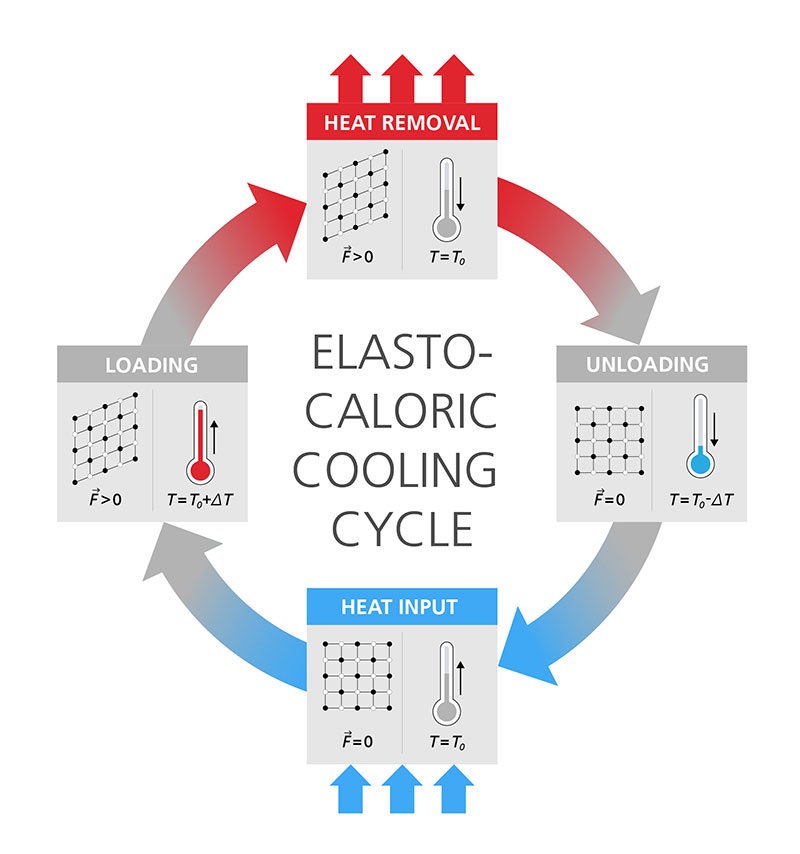
Elastocaloric materials are known as shape memory alloys and have long been used in medical technology on account of their biocompatibility. The best-known shape memory alloy is known by the acronym Nitinol. With these pseudoelastic alloys, a strong shape deformation can be achieved by adding heat; when the heat source is removed, the metal returns to its original shape. This effect is absolutely reversible. The reverse effect, the so-called elastocaloric effect, is also possible: a change in shape results in transformative heat being exchanged with the environment. In our systems, we use this caloric effect through smart system integration. In future, such solid-state heat pumps and cooling systems could provide an environmentally friendly and efficient alternative to compressor technology.
How does an elastocaloric heat pump work?
When an elastocaloric material is exposed to a mechanical field of force, a crystalline phase transformation occurs, which causes the material to heat up. The heat generated is dissipated via a heat sink, so that the material cools down again to the initial temperature. Once the force field is removed, the crystalline order is reduced and the material cools down to a value below the initial temperature. It can now absorb thermal energy from the environment. Through the cyclical loading and unloading of the material and a corresponding heat supply and removal, a cyclical process can be created that can be used for heating as well as cooling.
Central innovation: a novel heat transfer concept
Fraunhofer IPM relies on a patented system concept for the construction of its elastocaloric systems that is based on rapid heat transfer using latent heat within a saturated steam atmosphere (heat pipe condition). By evaporating and condensing a fluid, heat is effectively transferred to the caloric material and then released again. This makes it possible to achieve thermal power densities that are an order of magnitude higher than in alternative system approaches.
In future, this will make it possible to realize cost-effective systems that require less installation space.
In particular, Fraunhofer IPM is working on:
- Development and construction of measurement setups for direct measurement of the elastocaloric effect, material efficiency as well as fatigue strength
- Simulation of elastocaloric materials and systems
- Development, construction and characterization of elastocaloric heating and cooling systems
We support industrial companies in the conceptual design and development of caloric systems – all the way to the construction of finished systems for specific applications. We draw on many years of technological experience, established supplier contacts and the capacity of our highly specialized workshops and laboratories.
